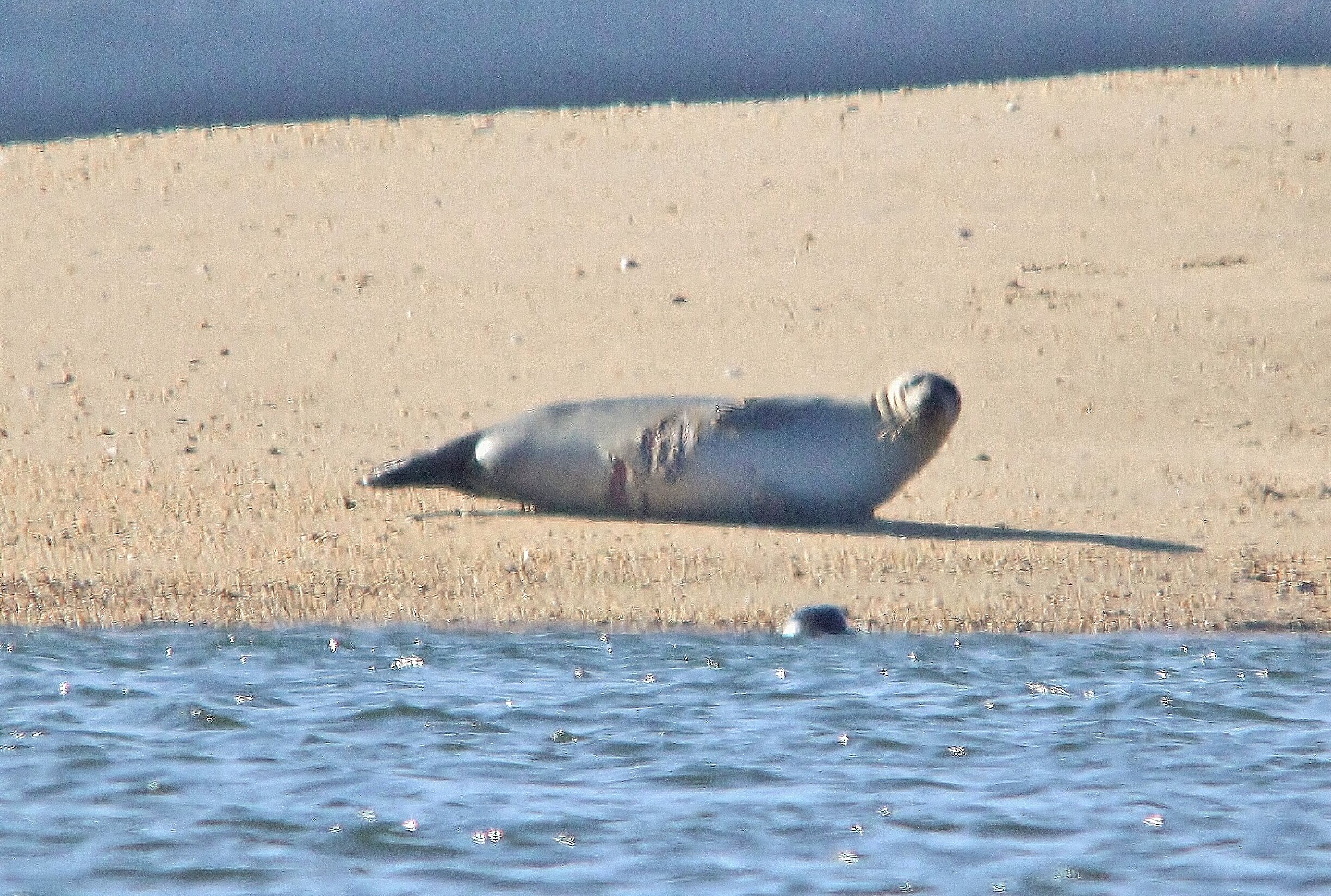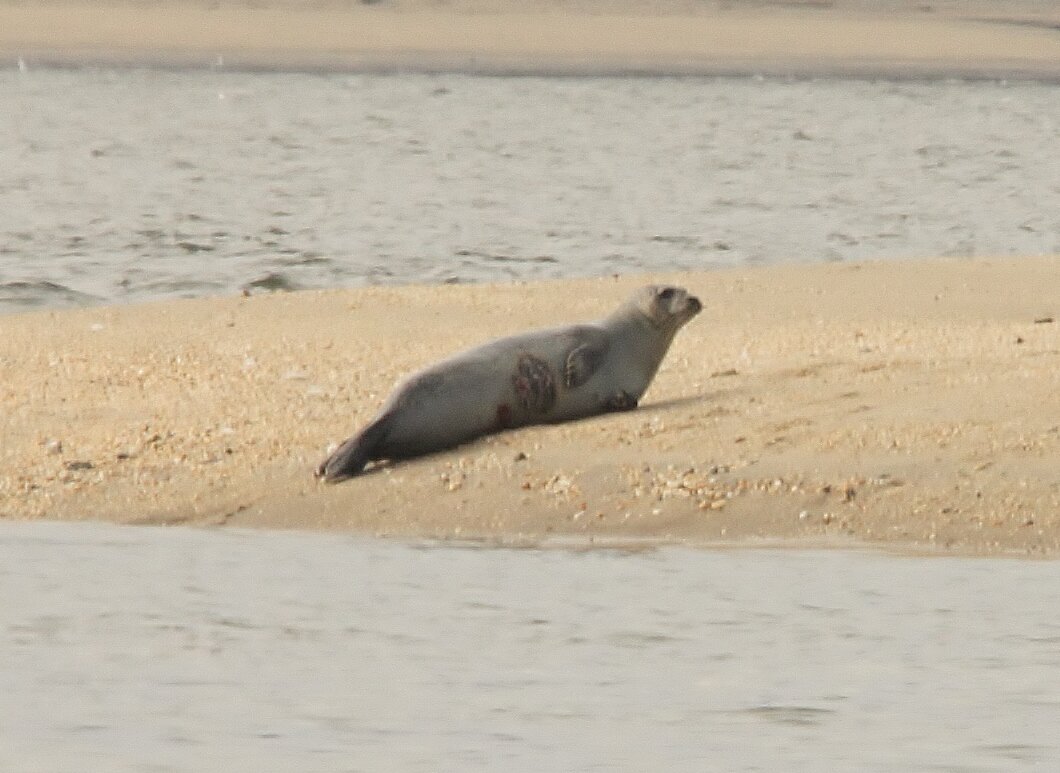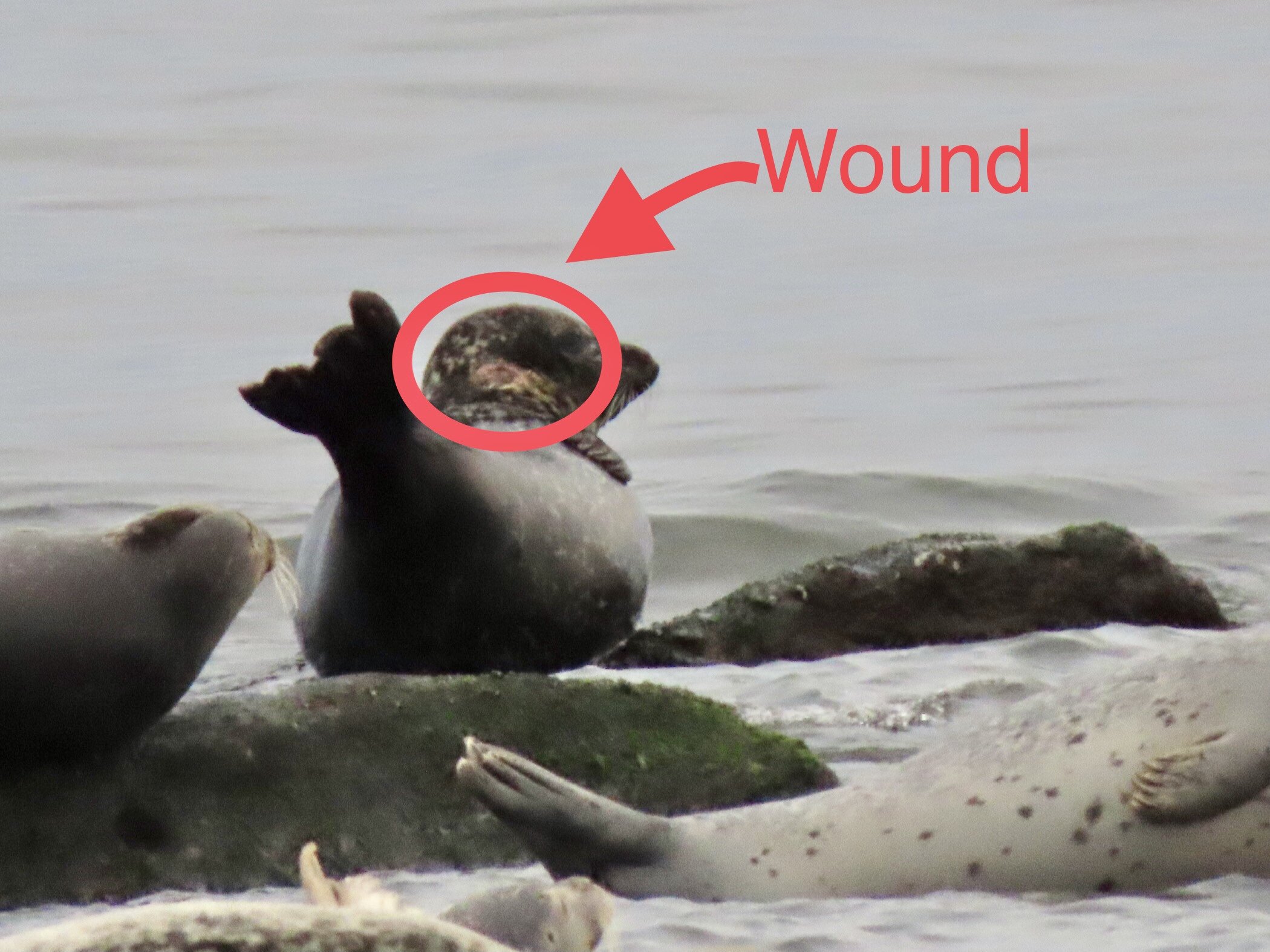Volunteers Needed to Help Monitor Seal Populations
Along The Northern Jersey Shore.
Members of the public are invited to share their interest of marine mammals with Save Coastal Wildlife Nonprofit for this exciting volunteer opportunity.
This volunteer program contributes to the long-term monitoring of harbor seals and other pinnipeds in Sandy Hook Bay, NJ. It will aid in protecting winter haul-out seal colonies and assessing the health of the coastal-marine ecosystem.
Each winter, volunteers with Save Coastal Wildlife carry out surveys of seals during the winter, when many have arrived to local coastal waters to rest and feed after a busy breeding season up in northern New England and Canada.
How to Volunteer?
All volunteers are required to fill out the volunteer waiver and release form prior to participating in any volunteer activity with Save Coastal Wildlife nonprofit.
In addition, please sign up to receive emails from Save Coastal Wildlife nonprofit.
All the latest volunteer information is sent out via email to interested people including information about seal monitoring activities.
Volunteer Duties
All interested people Must Attend A Training session, Even if You Volunteered in Previous Years!
Juvenile Harp Seal resting on a beach in Middletown Township, New Jersey.
A trained volunteer will conduct land based seal surveys, identify seals species, photograph seals and conduct photo-ID when and if possible.
Be able to walk or move around on a cold and often windy winter beach on sandy and muddy terrain to observe, collect and report data on seal numbers, behaviors, and disturbances.
Use binoculars and/or a spotting scope to observe seals. Volunteers must be able to provide their own binoculars or spotting scope. We prefer binoculars that have a power of at least 8x42.
Volunteers must be able to hike distances anywhere from 1 to 2 miles with optical equipment and extra clothing. Must be able to tolerate sun, wind, fog, and cold. Volunteers must also use own vehicle to transport to and from survey sites.
We’re looking for dedicated, mature, and responsible volunteers with a passion for marine mammals and local biodiversity along the Jersey Shore.
Identifying seals from pictures:
If a seal exposes its belly, you may be able to tell if the seal is male or female.
According to the University of St. Andrews: A Harbor seal’s coat is mottled and each seal has a unique pattern of spots in their pelage which can be used to identify them individually. This technique is known as photo-identification, and it is of great use to study wild populations of animals that are naturally marked (e.g. whales, seals, giraffes, tigers, salamanders, turtles, whale sharks and manta rays among many others). By photographing animals repeatedly over time and identifying them based on their unique natural marks wildlife scientists can start building up individual sighting histories. These can then be used to infer different individual and population parameters, such as the number of animals using an area, their survival and birth rates, or patterns of residency or movement between different haulouts.
When we visiting a haulout site, take photographs of individual seals from a distance to avoid disturbing them, perhaps using a camera attached to a scope or by using a quality camera with a high powered lens. At the end of the day, review pictures to identify individual seals based on the spot pattern, mainly from the head and neck areas. This allows us to identify seals that have been previously photographed as well as adding newly seen individuals to the catalogue.
Each photograph will be graded for its quality, and we will make a note if what we can see is the right, the left or the front side of the seal’s head. That is because the pattern will be different on each side, so technically we end up with three different catalogues. Also, The color coat changes through the year, from a pale sandy-brown shortly before they moult to a fairly dark charcoal-grey just after moulting. Yearlings (one-year-old seals) begin to moult first, followed by adult females and finally adult males, although there is considerable overlap between all groups.
We always try to get the left, front and right sides of each seal. It’s not always the case though!
Volunteers might also be able to identify individual seals by special marks or scars on the body.
For a number of years, volunteers were able to identify one Harbor seal that often returned to Sandy Hook by the scars on its belly. The seal was nicknamed “scar-belly,” due to its scars on its abdomen probably due to a boat propeller.
On November 24, 2011, volunteers with Save Coastal Wildlife took a picture of this adult Harbor seal resting on a beach in Sandy Hook Bay, NJ with a unique scar pattern on its belly.
On February 4, 2012, volunteers with Save Coastal Wildlife spotted an adult Harbor seal with what appeared to be an identical coat color and scar pattern on its belly resting on the same beach in Sandy Hook Bay, NJ.
Why do seals haul out?
Water conducts heat easily, so aquatic mammals are faced with the problem of staying warm. For seals, time spent on land is time not losing heat so rapidly, and so not having to eat so much. It is a vital aspect of their overall energy balance strategy.
When not foraging for prey in the water, seals will spend a good amount of time on land at “haul-out sites” to digest their food, rest, and warm their bodies under the sun, at which time they are visible to be counted in the surveys. Most regions are surveyed by using visual and conventional photography.
The estimated number of seals in a population does contain some considerable uncertainties. The largest contribution to uncertainty is the proportion of the seals not counted during the survey because they are in the water. We cannot be certain what this proportion is and it is likely to vary in relation to factors such as state of the tide, weather, and the amount of food resources in an area. Efforts are made to reduce the effect of these factors by always conducting surveys within 2 hours of high tide, which seems to be a time when most seals are resting. Perhaps as much as 40% of seals are likely not to be counted during surveys but because of the uncertainties involved in the surveys, figures are normally presented as minimum estimates of population size.
If you see a seal resting on a beach:
** Always stay at least 150 feet away or 50 yards away (about half the size of a football field).
• Never attempt to touch or handle seals as they can be aggressive if threatened.
• Seals carry diseases that can be passed on to humans; and people have diseases that can make seals sick.
• Seals can and do bite, and they can move very quickly.
- Ensure you keep small children at a safe distance, and always keep dogs on a leash, under control and away from seals.
- Do not disturb seals. Don't make loud noises or throw things at them.
- Do not feed seals or wild animals, as it encourages them to approach people in the future.
If you see a seal that appears injured, entangled, sick, or being harassed by a person, in New Jersey call the Marine Mammal Stranding Center at 609-266-0538.
In New York, call the Riverhead Foundation for Marine Research and Preservation at 631-369-9829.
These two organizations have the authority to help stranded or sick marine mammals and sea turtles. Wildlife experts with the help of trained volunteers will determine if an animal is in need of medical attention, needs to be moved from a populated area, or just needs time to rest.
SEALS IN NEW YORK HARBOR
In addition to Sandy Hook Bay, NJ, various seal species haul out at different sites in Lower New York Harbor. Swinburne Island and Hoffman Island are two artificial, long-abandoned pieces of land near Staten Island, NYC, and located south of the Verrazano Bridge. These two small islands provide a rocky, but relatively safe and quiet space for seals to rest, relax and digest their food from late autumn through early spring.
The closest you can get to the islands on land is at South and Midland beaches on Staten Island. These beaches are about a mile away from viewing the seals on land. Please bring a pair of binoculars or a spotting scope to view the seals.
Volunteer Seal Survey Data Results for Sandy Hook Bay, New Jersey
A juvenile Harp Seal (Pagophilus groenlandicus). One of the first seals seen resting on land at Sandy Hook. Photo taken in February 2003 by Jenna Reynolds, President/Director of SCW.
VOLUNTEER MONITORING SURVEYS
December 2021 saw several seals being aggressive over space at a haul-out site in Sandy Hook Bay, NJ
Grey seal spotted among harbor seals in Sandy Hook Bay on February 16, 2019
Grey seal spotted among harbor seals in Sandy Hook Bay on March 3, 2019
An adult Harbor seal with an eye injury spotted during winter 2019. The injury may be from a fishing hook.
Wednesday, November 25, 2020: An adult (probably) pregnant female Gray Seal. A harbor seal with a gash on its chest mostly likely from a boat propellor. Photo from Kim Garrison.
Adult female Gray Seal spotted by Kim Garrison on February 22, 2021
A picture of harbor seals make the front page of a local weekly newspaper in early April 2021.
Juvenile Gray seal observed near the Entrance to Sandy Hook on March 17, 2023.
Between the Christmas and New Year’s Day holiday week 2021-2022, the weather was extremely mild with temperatures in the 50s and 60s. This favorable outdoor condition lead to high attendance of people to view the seals along Sandy Hook Bay. This resulted in seals showing signs of stress. Eventually, the seals abandoned this haul-out site for the remainder of the week, and the high amount of seals seen earlier in the month at 70 seals, was never seen again during the monitoring period.
Harbor seal population observed on the rock jetty at Sandy Hook, NJ, February 2023.

























